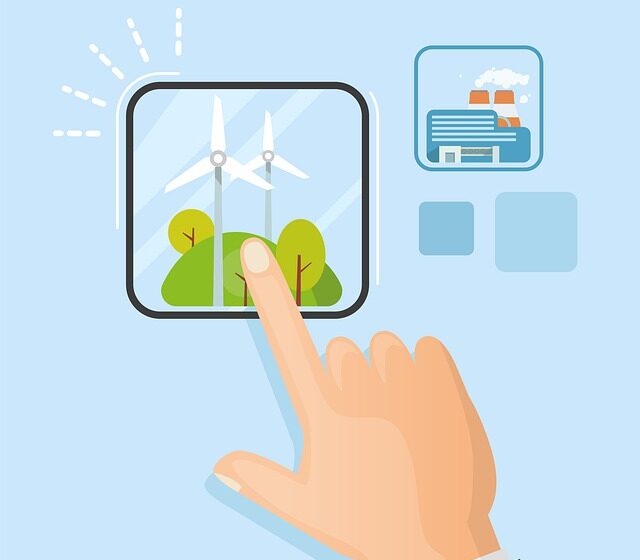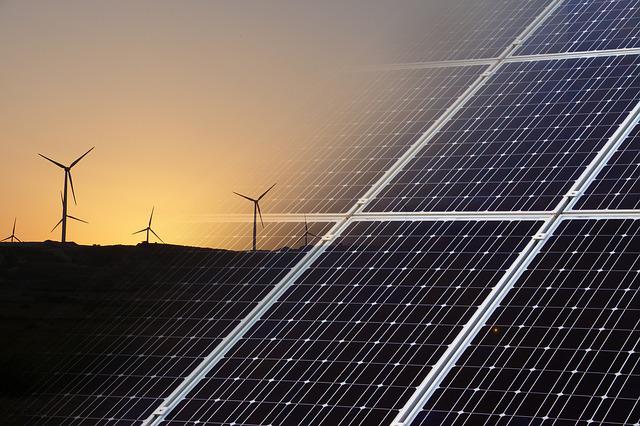How Businesses Can Adapt to Meet Green Energy Targets

As we move to a more sustainable, green, and clean energy grid, there will be an increase in the need for major transmission lines throughout the country. Naturally, we are not talking about an increase in the number of wooden telephone poles in your residential neighbourhood. But rather the high-tension lines that connect the power source to the national grid. Most of the alternative energy sources are located in remote areas. There is a need to connect those remote sources with existing systems. Local businesses, however, can assist in meeting green energy targets by being providers of green energy themselves.
Exposed roof tops
There is no question that many successful businesses operate out of fairly large buildings that have a lot of wasted space on the exposed rooftops. For the most part, commercial buildings use their roof for heating, air conditioning, and ventilation systems. Beyond that, much of the space is unused. Because of this, many businesses that own their own buildings have begun installing green energy systems. It is include solar panels, in order to absorb the radiant energy. Otherwise it would expose directly to the roof.
Before any business decides to completely cover their exposed rooftop with solar panels, they must determine whether the rooftop is designed to support such a system or not. Careful consideration and planning are required to determine the weight load capacity of various roofs to determine whether installing such a system would be beneficial. Nevertheless, if your commercial space is capable of supporting a large enough system to supply your organizational needs then the choice comes down to whether it would be a financially viable decision for the company.
Electronic systems

A green energy system requires more than the installation of basic panels. It is important to remember that while the panels convert the sun’s radiant energy into a usable current. It is not suitable for the direct operation of equipment without some form of charging and conversion system in place. That is, the voltage provided by the system needs to be converted from a direct current to an alternating current at the correct voltage.
It is important to remember that one drawback of green energy is that it is not always available. Wind turbines will only spin and produce electricity when there is a sufficient speed of wind to turn the blades. Likewise, solar panels can only produce electricity during the daytime – assuming that the skies are not overcast. As a result, you have the option of either installing your own storage system that can be used when needed. Also you can use the national grid as a storage medium. In this way, you will have the opportunity to sell your extra energy production back to your local power company.
If you plan on using grid storage, then that means you need to ensure that the energy being produced by the panels or turbines is converted properly. This means not only the correct voltage but also to the correct frequency. In order to match the grid voltage and frequency, you will need to use electronic systems approved by your local power provider. This is important to do before you begin to feed back into the grid system.
Power switching
The cost of maintaining a storage system can be overly burdensome for most organizations. The choice of using the grid as a storage medium by feeding back into it is an obvious one. But in order to implement grid storage, it is necessary to provide the appropriate transmission switching system. That meets the business needs and requirements of your local power supplier. Companies like Southern States have been providing quality transmission switching line equipment for more than a century. This equipment has been used all over the national grid. It meets the basic needs and requirements of every power supplier that is currently connected to the grid.
This equipment will allow you to switch between your own green energy system and the local grid system as needed. That is, if you are running a solar system on the roof of your business. You would use a switch to select that as a source during bright days. Otherwise, the grid as a source after the sun goes down. With a system that is properly designed to match the voltage and frequency of the grid supply, switching between the two sources can be done without any interruptions – much like the automatic switching of a backup generator.
Ultimately, it can be an expensive endeavour for any organization to implement and integrate its own green energy system in order to be greener and meet targets. A specialist can help guide you and your organization through the decision-making process – regardless of whether you are installing your own system, buying carbon credits, or even specifying your choice of power sources if that choice is available in your area.